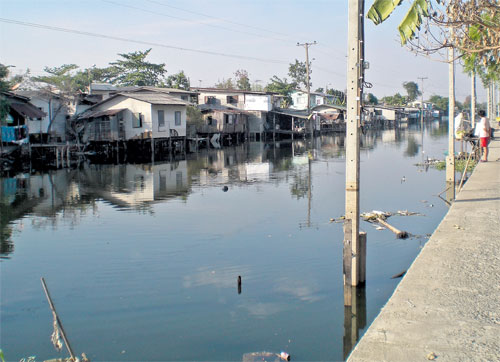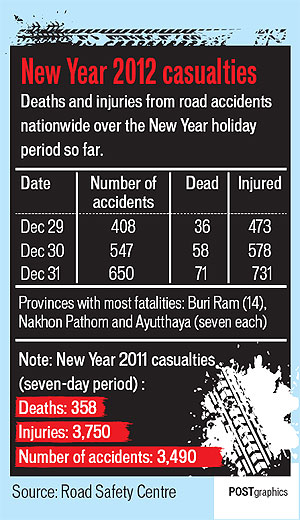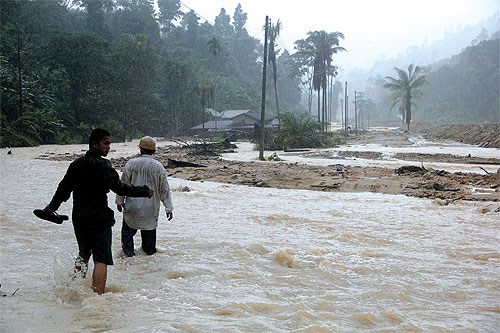 |
| WATERFRONT PROPERTY: Bangkok’s canals attract crowded squatters’ communities and often stretch beyond the water’s edge. |
Obstructions along canals in Bangkok and nearby provinces are commonly cited as a major factor behind this year's flood disaster.
However, clearing them has proved a thorny issue for authorities as it means not only removing debris and sediment, but also tearing down people's makeshift homes.
The extensive canal system offers drainage during heavy rains and flooding. But most area canals, or khlongs, remain severely clogged in part due to squatters' houses along and especially directly over them, obstructing the flow of water to the river.
Authorities have been struggling with the problem of khlong encroachment for decades. It starts with poor people building homes on public land alongside canals and then spills onto the polluted waterways with structures built on stilts.
As more poor people come to live in Bangkok, the original encroachers allow newcomers, mostly relatives and friends, to build houses in the water in front of their houses in return for a small amount of money.
Authorities have tried in the past to evict or relocate squatters living directly over the canals, but these efforts invariably stall and fizzle after a failure to find other suitable living quarters.
This year's flood disaster has brought a new sense of urgency to the problem and there is now little doubt that these structures obstructing water flow will be removed _ the only question is whether this will be done easily or with difficulty.
Leaders of squatter communities generally agree that houses built directly over waterways need to be removed, but they also say that most of the people living in them have nowhere else to go and cannot afford to relocate.
A Bangkok Metropolitan Administration (BMA) official, who asked not to be named, pointed out that individual districts are authorised to solve problems with canal squatters in their areas.
''Under the Public Place law, the Local Administration law and other regulations, the district administration can evict them,'' said the official.
But he added that the districts ''prefer negotiation and lawsuits, which take time''. Meanwhile, the BMA continues to build dykes along canal banks, not only to stave off erosion but also to prevent encroachment along the water's edge.
A survey by the BMA's Irrigation Office in June of this year found that there were 6,239 houses encroaching into Bangkok's canals. Of these, 1,736 were in Chatuchak district, 1,469 in Sai Mai district, 363 in Watthana district, 269 in Saphan Sung district and 248 in Don Muang district.
Over the years a loosely organised network of canal communities has emerged, with members trying hard to prove that they can improve the waterways by collecting garbage, installing small waste water treatment facilities, and other measures.



